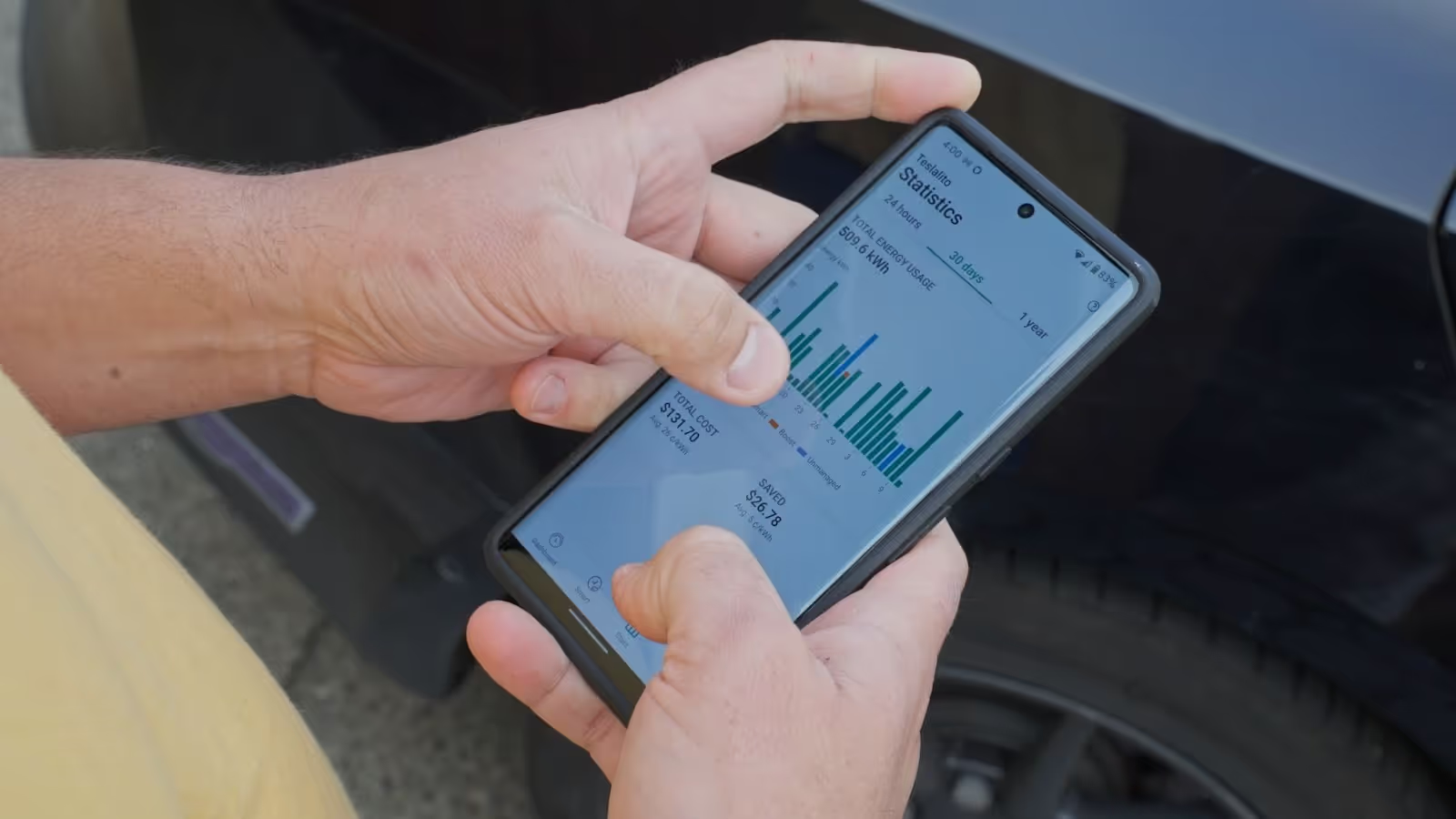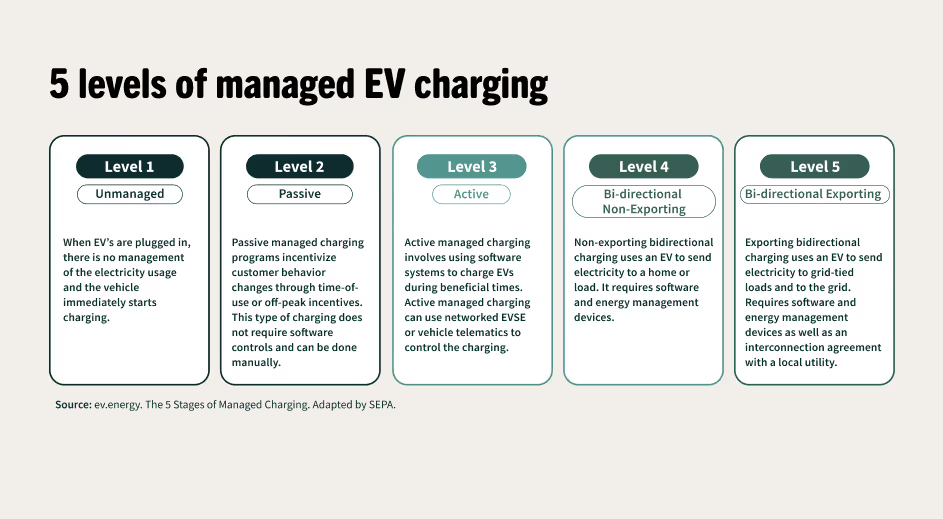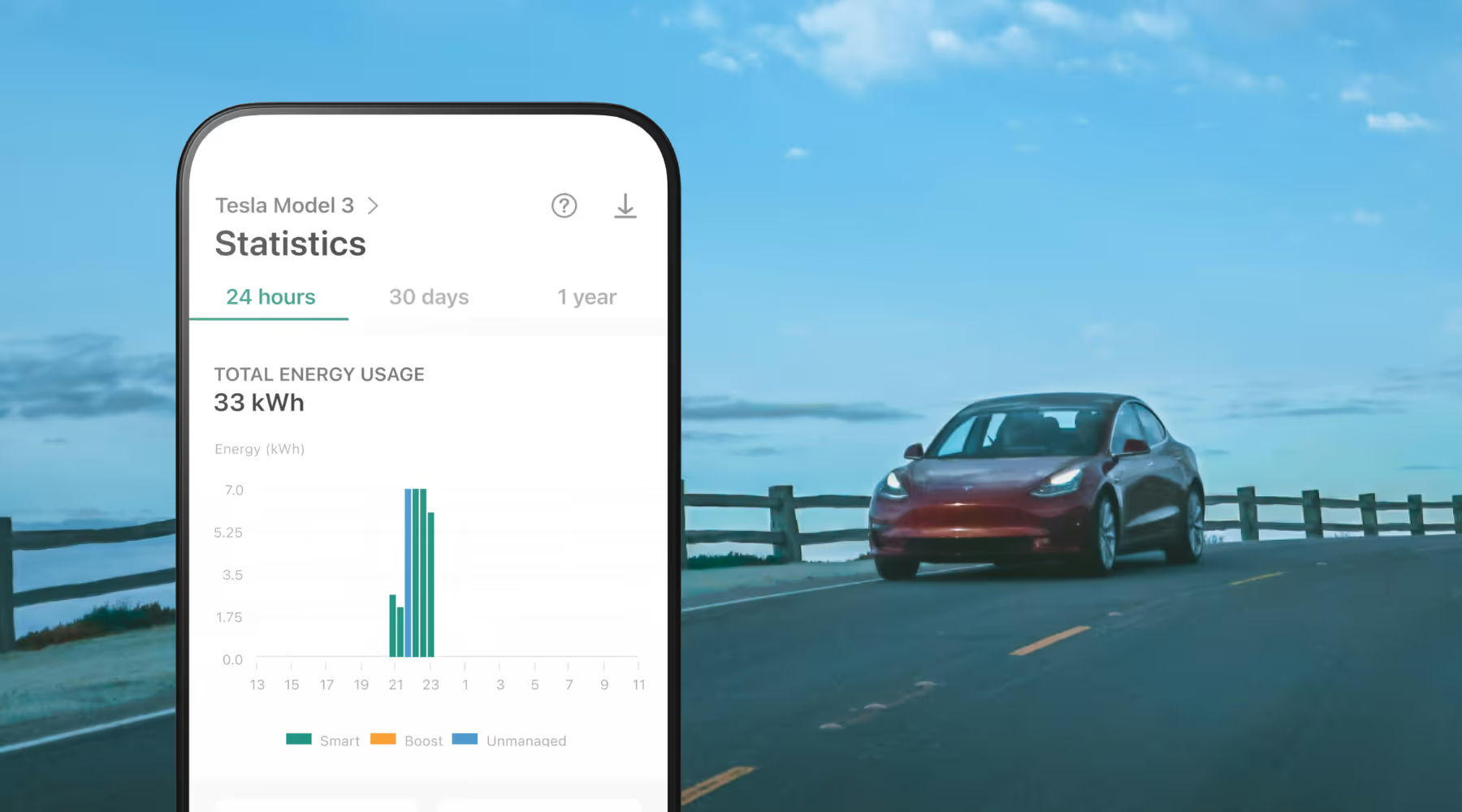Learn how MCE Sync encouraged grid-friendly EV charging behavior to address the evolving needs of California’s grid.
Amid rapidly rising electrification and a changing climate, California’s grid is facing more strain than ever before. Despite the Golden State’s leadership in EV adoption and renewable energy, synchronizing demand with supply remains an urgent challenge.
The MCE Sync program from MCE, powered by ev.energy, lays the blueprint for utilities looking to turn EVs from liabilities to assets for the grid. Now in its third year, the program has demonstrated the power of incentivizing and automating grid-friendly charging behaviors across Contra Costa, Marin, Napa, and Solano counties.
This case study delves into the program's challenges, strategy, implementation, and results.
Empowering sustainable energy and mobility for California
As a Community Choice Aggregation (CCA), MCE offers an alternative choice to the default utility for consumers in its service territory and redirects profits into clean energy initiatives for local people.

Aware of the incoming wave of EV demand, MCE’s team proactively set up a managed charging program to understand EV charging load and driver behaviors, build up flexible capacity for the grid, and match EV charging with California’s abundant source of solar power.
With 34% of new vehicle sales being electrified, Marin County has the second-highest EV market penetration in the US, so time was of the essence. However, this couldn’t come at the expense of providing a convenient, robust, and equitable solution to maximize flexibility.

MCE proudly serves a diverse community across its service territory. The program needed to have wide appeal to drive maximum benefit.
Today, the MCE team involved includes Melanie Biesecker as Customer Programs Manager, Kalicia Pivirotto as Marketing Manager, and Alice Havenar-Daughton, the VP of Customer Programs, who oversees the program team.

Shaping strategy with an insight-driven program
With MCE at the forefront of change, the team needed to uncover how EV load and driver behavior were impacting the grid before they could design an effective program to tackle grid challenges.
What they found matched up with ev.energy’s data from programs around the world, and remains the same today. Almost all drivers plug in their vehicles between 5 pm and midnight and then leave them to charge overnight. Vehicles typically need less than 3 hours of charging time to recharge their batteries, which creates significant flexibility potential for the grid.

In November 2021, MCE launched the MCE Sync app, powered by ev.energy, and began enrolling customers in a pilot program.
As an active managed charging program, MCE Sync can schedule and automate EV charging for users to align with the best times for the grid. This enables EV charging load to be curtailed during summer demand response events and aligned with renewable energy generation year-round.
MCE Sync remains the only residential initiative participating in the California Peak FLEXmarket program.

During the pilot program, customers received an average cashback of $6 per month, in addition to savings through off-peak charging at lower electricity rates. Their vehicles were charged with electricity that boasted up to 90% lower carbon emissions compared to the California average. Notably, during peak hours when the California grid faced strain, the MCE Sync pilot drastically slashed EV charging consumption by an impressive 93%, achieved by strategically shifting charging to lower-demand hours.
Incentivising grid-friendly EV charging behavior in California
In June 2022, MCE upgraded the program with new incentives to encourage participation in demand response and low-carbon events. Participants now earn a $50 enrollment bonus and $10 per month for participating in 2 or more low-carbon events, on top of off-peak rate savings.

The MCE Sync team also worked with ev.energy to develop and release Solar Charging - a new feature allowing drivers to match their EV charging with their zero-carbon home solar power generation.
Over 30% of electric vehicle owners in MCE’s service territory have home solar arrays - a source of distributed energy. Providing the Solar Charging feature free-of-charge has driven rapid adoption and subsequently reduced grid load and emissions.
“EV adoption in the MCE service area is amongst the highest in the nation. We’ve been really successful with MCE Sync in shifting customer charging out of the 4-9 PM peak. We’re also working with our partner at ev.energy to encourage drivers in the program to plug in their vehicles and charge when there is the most solar on the grid.”
- Melanie Biesecker, Customer Programs Manager, MCE
Boosting activations for grid and environmental impact
With a solid program design and infrastructure in place, MCE could turn its attention to enrollments and engagement.
The beauty of the MCE Sync app is its simplicity. Users can download the app, connect their vehicle, and set their preferences in minutes.

To drive further success, the team worked closely with ev.energy’s in-house marketing experts to establish a comprehensive suite of emails and push notifications that drive awareness of the program, guide users along the onboarding journey, increase engagement in low-carbon events, and remind participants of savings, rewards earned and positive environment impact.
MCE also partnered with local dealerships to increase awareness of the program and aligned their marketing campaigns with the MCE EV rebate program, so drivers could enroll from the day they get their EV.
Driving results

Today, 96% of MCE Sync participants’ EV charging now takes place during the off-peak midnight to 3 pm window - a shift of 72% compared to the baseline.
This has resulted in an 89.6% average total grid load reduction during the 4 PM - 9 PM peak window among program participants.
Additionally, the program has saved over 317 metric tonnes of carbon emissions - and counting.
Mitigating summer blackouts
Between August 31 and September 9 2022, California’s grid operator (CAISO) issued daily Flex Alerts, urging residents to curb energy usage from 4 pm to 9 pm. In tandem, the Peak FLEXmarket events dispatched instructions to MCE Sync participants.
This resulted in rapid reductions of participant EV charging by up to 96%, aiding California in averting blackouts. An impressive 98% of the app users engaged in this initiative. Ultimately, MCE Sync effectively curbed energy consumption from EV charging by over 5 MWh during the period.
Soaking up the sun
Additionally, 11% of participants engaged in at least one Solar Charging session and many have become recurring users of the solar feature. With upcoming Net Billing Tariff rates for new home solar installations in California, EV drivers will be more compelled to maximize their self-consumption of their generation during the daytime using MCE Sync.
The program’s Solar Charging feature has already helped MCE remove 489 MWh of energy demand off the grid, typically during peak periods when it’s under strain from air conditioning and other hard-to-shift usage.
Solar Charging has saved MCE customers over $46,000 in energy costs to date.
Delighting EV drivers
With its simple interface and compelling incentives, the program has been a hit with drivers and now serves 10% of the serviceable market with a 4.1 App Store rating.
The CCA has now paid out over $110,000 in incentives and provided drivers with over $61,000 in total energy cost savings.

Looking ahead
As the program enters its fourth year, MCE remains ambitious about the future of MCE Sync. Scaling the program in line with the skyrocketing pace of EV adoption remains a continuous effort.
As a world-leading EV market, the focus in California is now shifting beyond early adopters and onto the early majority, which will require new approaches to drive awareness and increase the adoption of managed charging programs like this one. MCE remains focused on expanding EV adoption and managed charging participation throughout their service area, especially in communities historically underserved or affected by environmental and economic injustices.

Additionally, MCE aims to shift more charging to daylight hours to take advantage of California’s plentiful solar energy while always having their participant’s vehicles fully charged in time.
With ev.energy recently awarded a $41 million REDWDS grant from the California Energy Commission to enroll over 275,000 new EV drivers in its ChargeWise program, the partners are working closely on the next steps.
As an active managed charging program - which automatically shifts EV load in line with grid signals while delivering a complete charge for the driver - MCE Sync is among the most advanced EV programs worldwide.
The program is also well-positioned to bring additional value to drivers and the grid in the future. Bidirectional charging - which allows EVs to send power back to individual loads, homes, or the grid - presents exciting potential in the coming years.

Award-winning local impact, global implications
MCE is leading the way in establishing a reliable, sustainable, and equitable energy ecosystem for Californians. These efforts have been recognised with MCE recently winning the CalCCA Community Impact Award for Decarbonization.
MCE Sync, powered by ev.energy, demonstrates the significant value that EVs can provide to the grid and local communities, as electricity demand continues to grow in the transition to a decarbonized energy system.
By successfully integrating EVs with the grid, leveraging low-carbon energy sources, and putting equity at the forefront, MCE has created an impactful and compelling solution and established the blueprint for utilities and CCAs navigating the new energy landscape in California and beyond.
Ready to harness EV flexibility in your service territory? Learn more about ev.energy’s managed EV charging programs today.







.avif)




